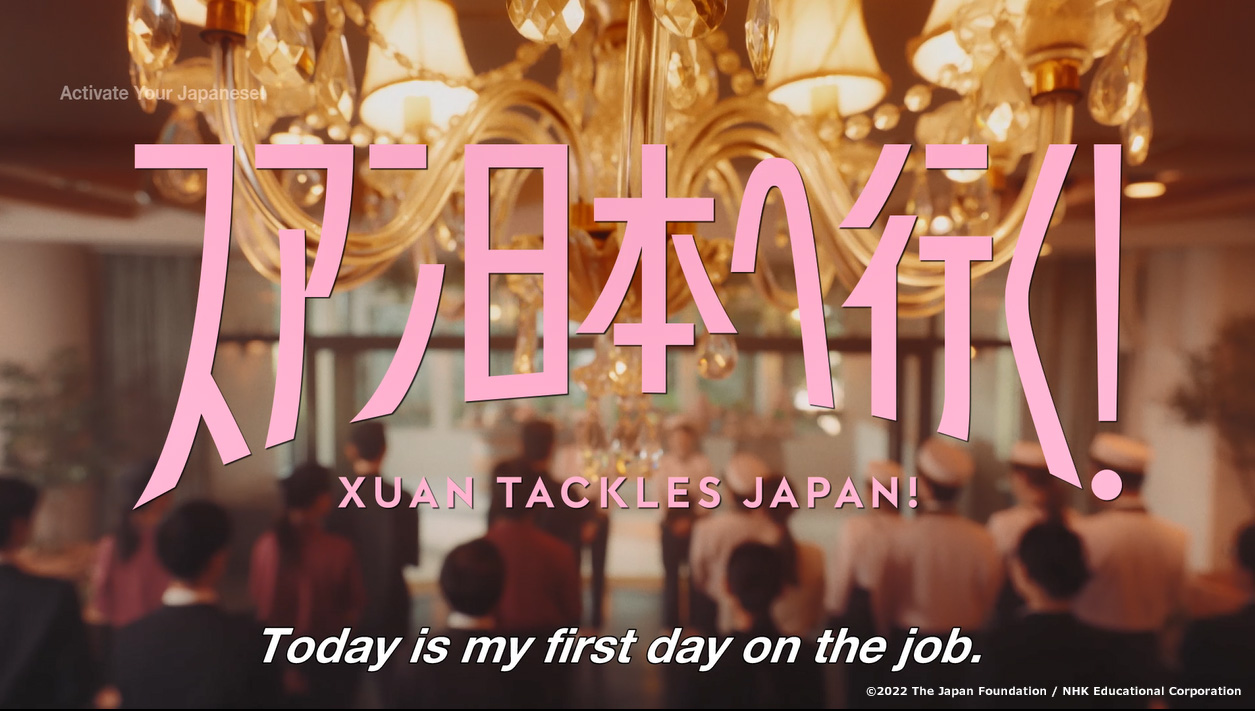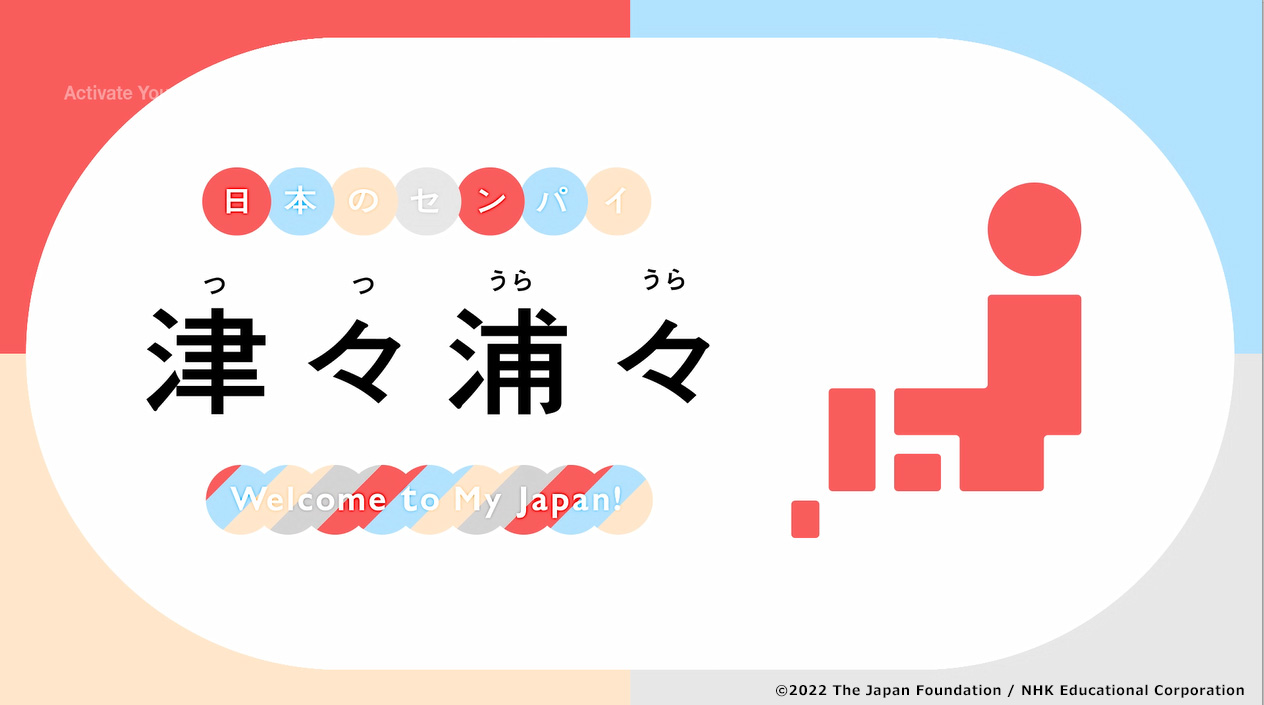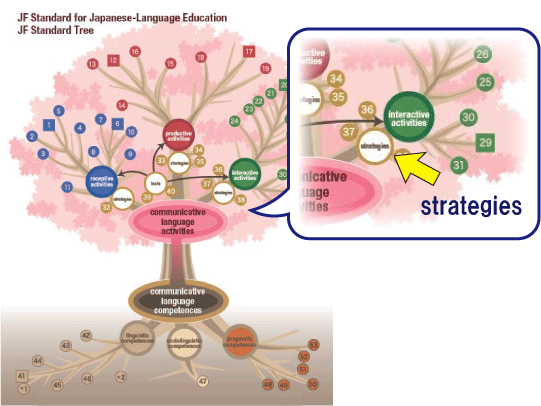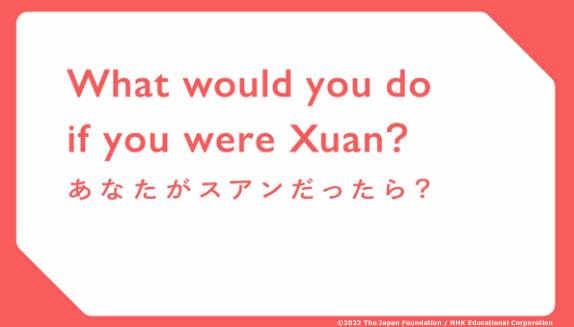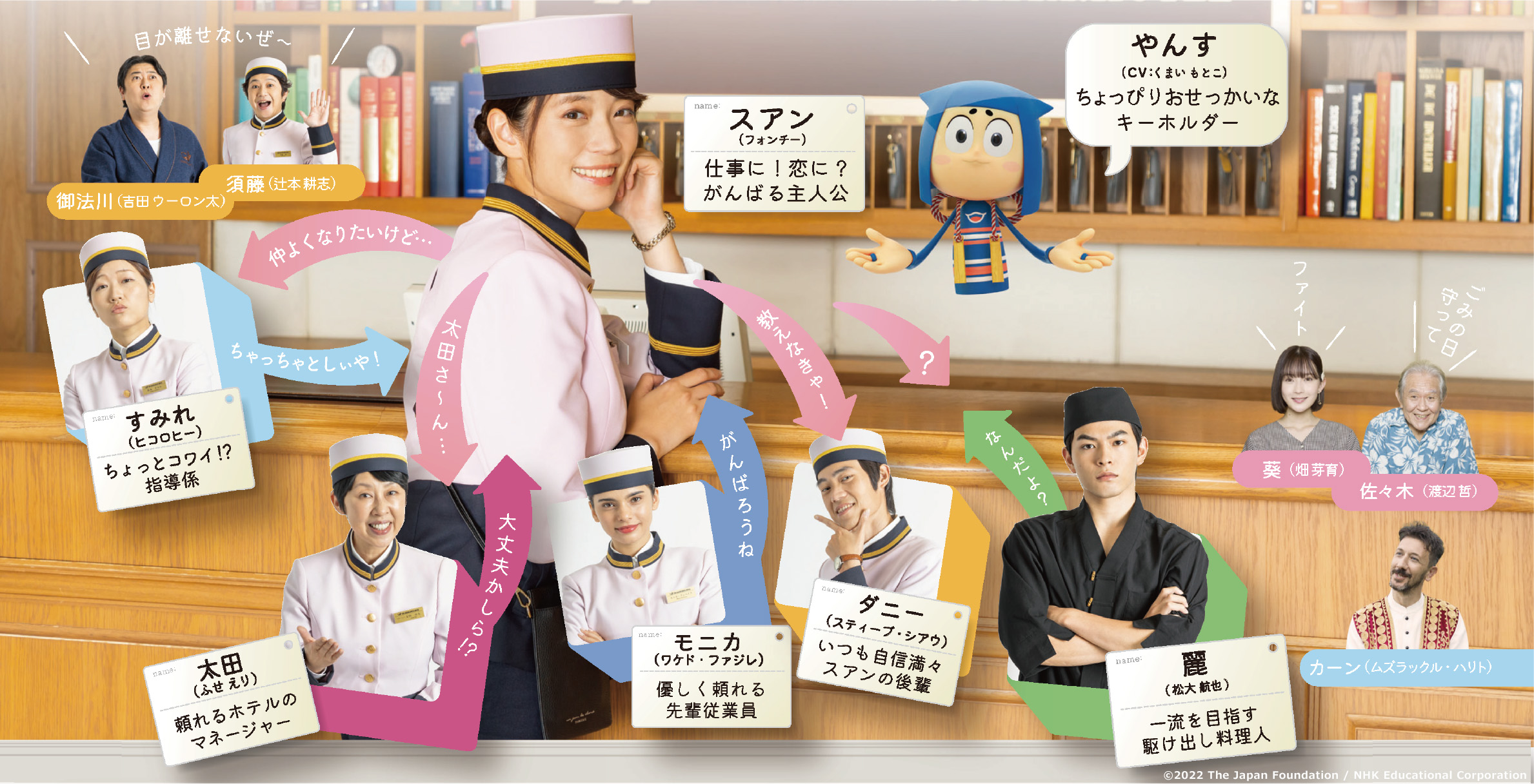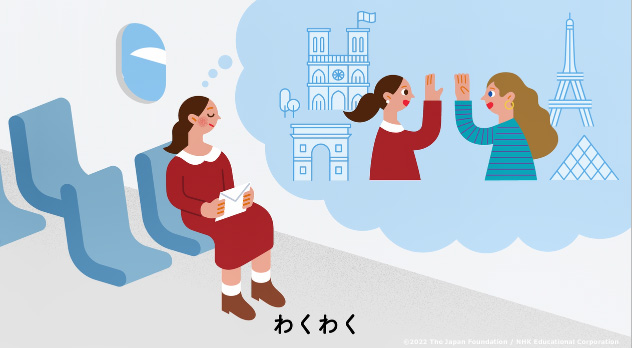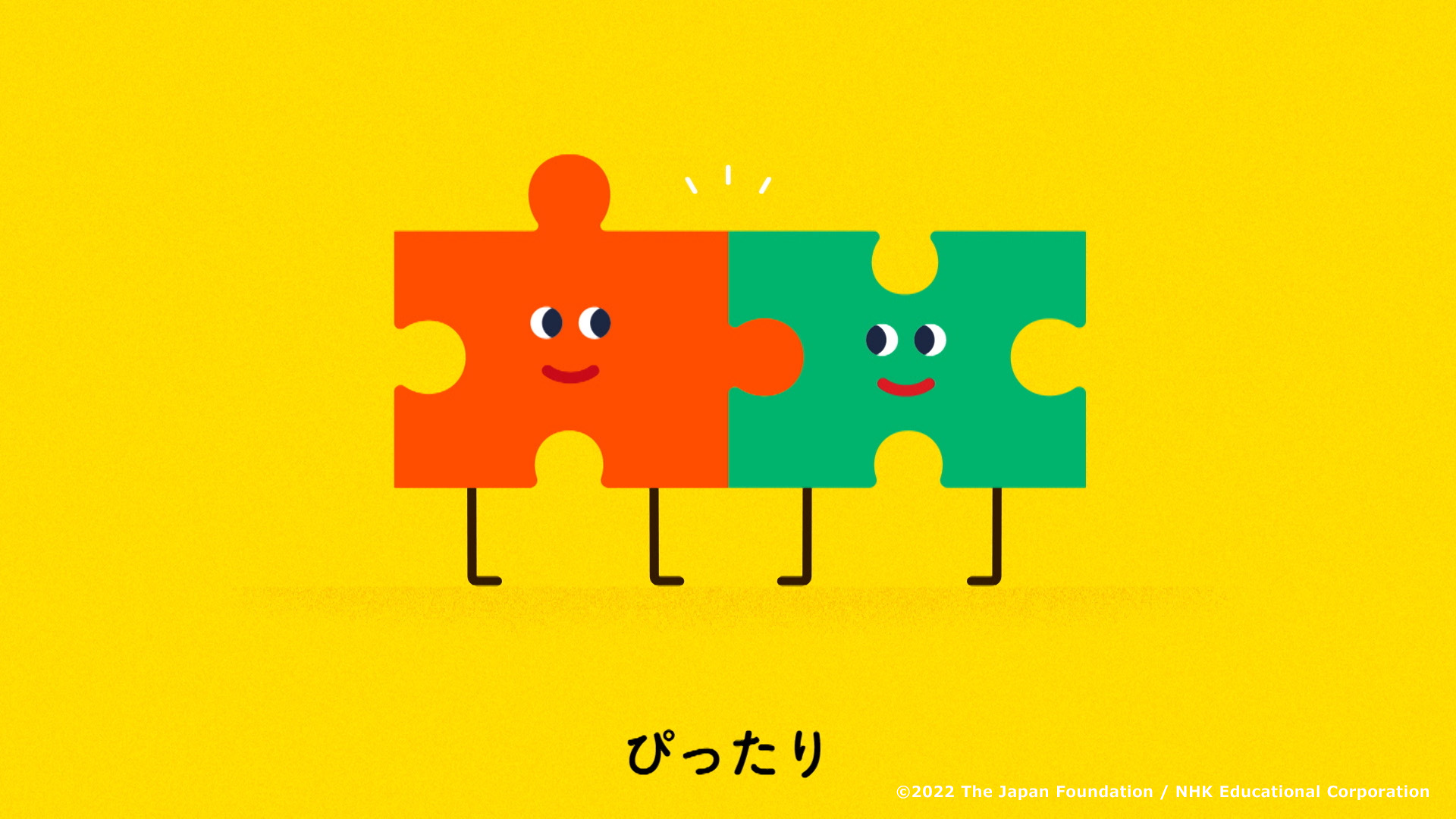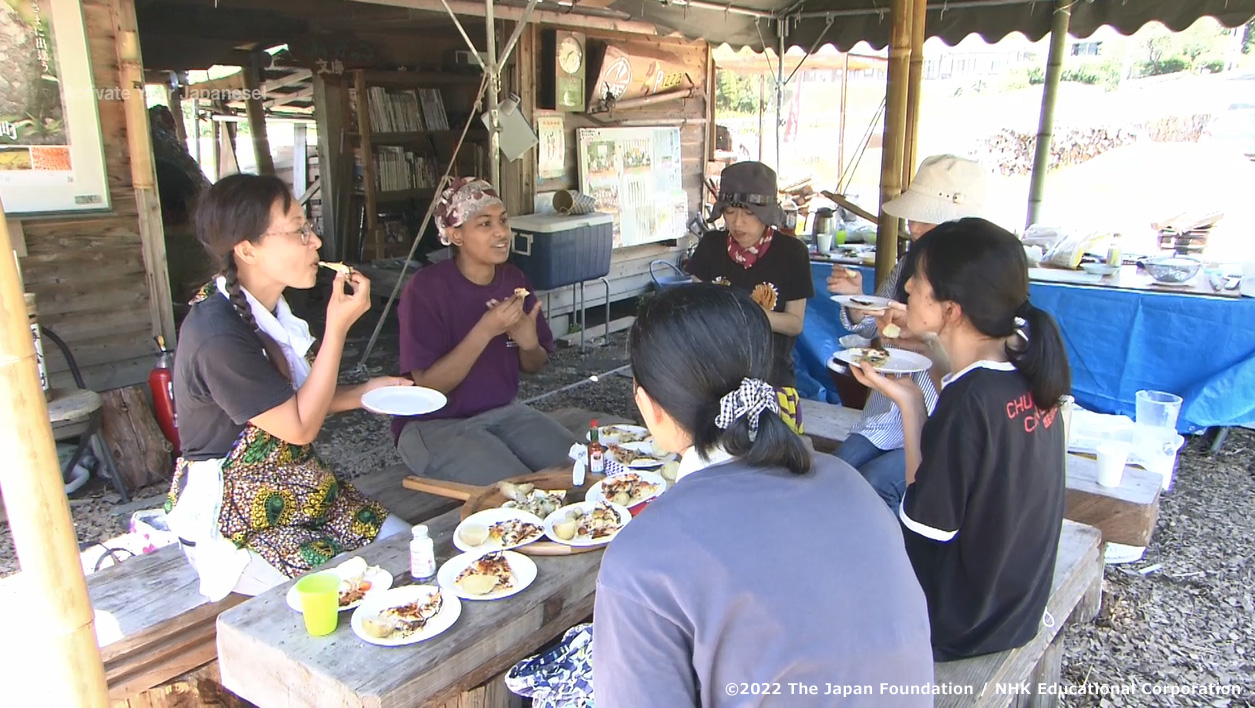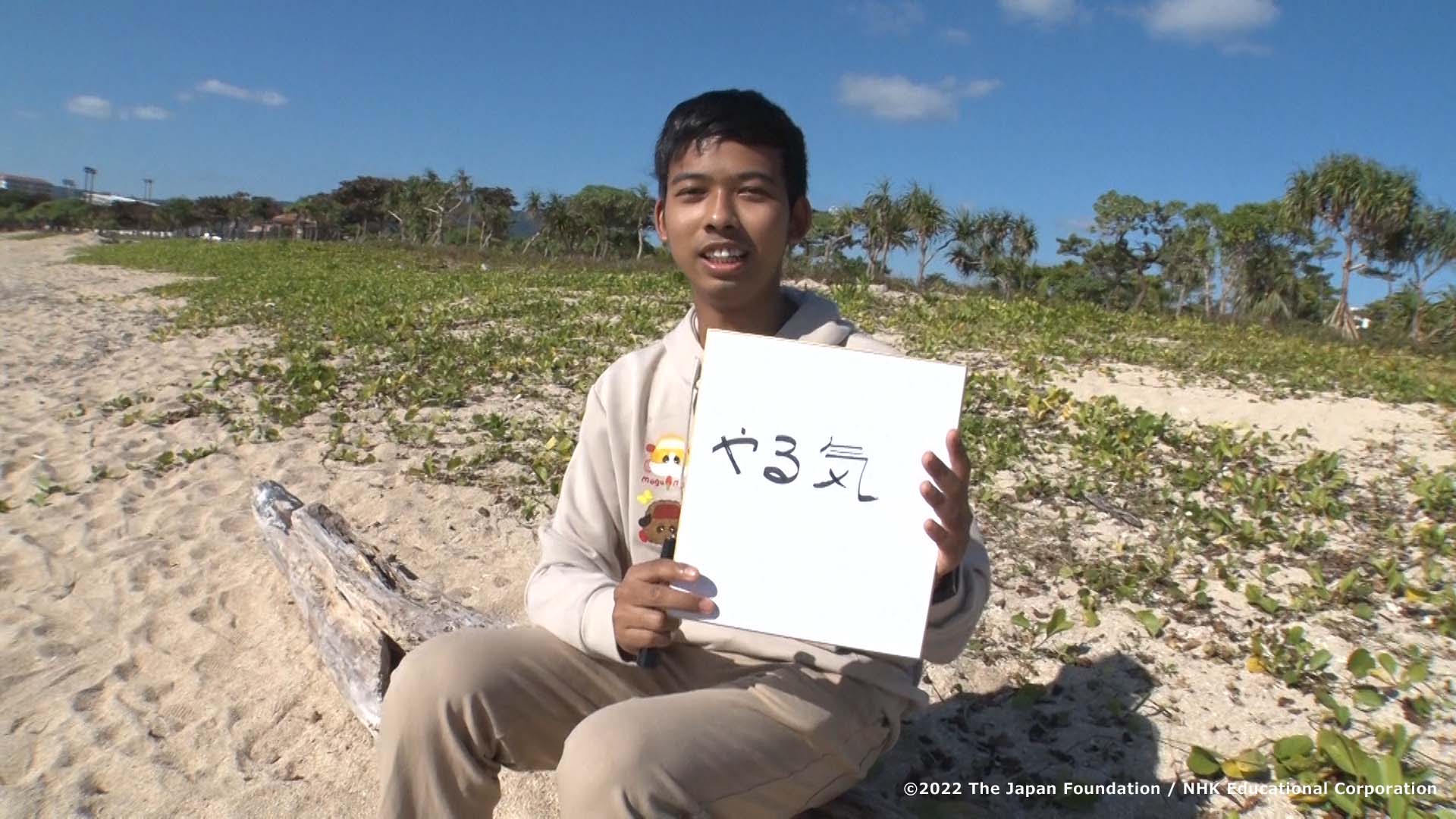Japanese Language Learning TV Program -ひきだすにほんご Activate Your Japanese!-Has Just Started!
- Nihongo Kyoiku News
- This corner introduces the latest information on matters of high interest to overseas Japanese-language educators from among the Japanese-Language Education Programs conducted by the Japan Foundation.
January, 2023
The Japan Foundation Japanese-Language Institute, Urawa
The Japan Foundation, jointly with the NHK Educational Corporation, has produced a Japanese language learning program titled “ひきだすにほんご Activate Your Japanese!” The program has been broadcast on NHK WORLD-JAPAN from the second week of April 2022, on every alternate Monday and Tuesday at five different timings (Japan time): Monday: (1) 10:40 a.m.–10:55 a.m., (2) 3:40 p.m.–3:55 p.m., (3) 9:40 p.m.–9:55 p.m., Tuesday: (4) 2:40 a.m.–2:55 a.m., and (5) 7:40 a.m.–7:55 a.m. The same contents are broadcast across all the five timings (1) to (5) during the same week so that audiences from around the world can view the program at a time that is convenient for them. For details, please refer to NHK WORLD-JAPAN’s website. All 24 episodes are also available on demand, at no charge, on the same website, so the program can be viewed at any time. We are also planning to launch a dedicated website to deliver the program to educational settings in Japan and abroad through various methods.

“ひきだすにほんご Activate Your Japanese!”
program logo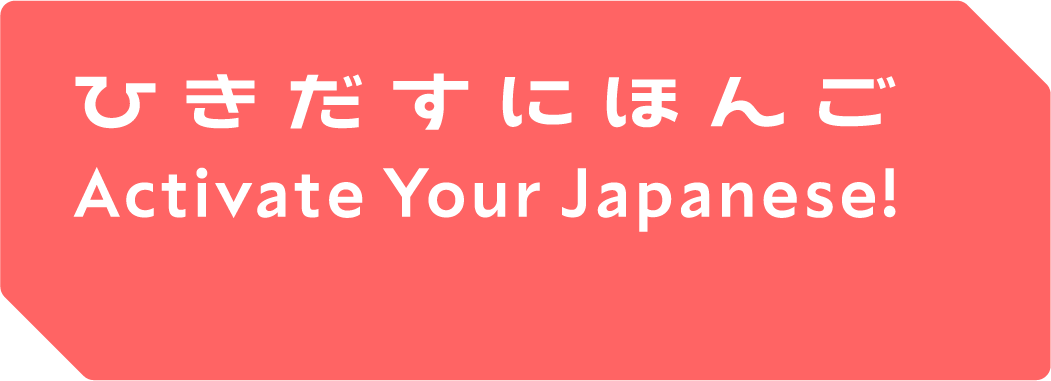
A different version of the logo
- Contents
-
- What kind of program is “ひきだすにほんご Activate Your Japanese!”?
- Providing support to improve your Japanese communication skills!
- Drawing out the competencies of each individual through strategies
- Introduction to each section of the program
What kind of program is “ひきだすにほんご Activate Your Japanese!”?
“ひきだすにほんご Activate Your Japanese!” is a Japanese language learning program that is primarily targeted at people who wish to live in Japan.
The 15-minute program is packed to the brim with contents that are categorized mainly into three sectionsNote 1: “Xuan Tackles Japan!”, a drama that depicts the growth of the Vietnamese girl Xuan who is starting work at a hotel in Japan, “ONOMATOPOEIA –Share Feelings–”, a mini section that introduces onomatopoeia that can be used immediately in casual conversations, and “Welcome to My Japan!”, a documentary featuring the senpai (seniors) who are active in various parts of Japan. There are a total of 24 episodes.
Opening sequences for each section
With contents that cover extensive aspects of the “real” Japan and facilitate enjoyable learning of the Japanese language, this program is suitable not only for those who wish to live and work in Japan; it can also be viewed broadly by those who wish to learn practical Japanese and find out more about the society and culture of the country.
Providing support to improve your Japanese communication skills!
For people who wish to work and live in Japan, the ability to communicate in the Japanese language is important for living a fulfilling life, in a way that is true to themselves. “ひきだすにほんご Activate Your Japanese!” is aimed at providing support to enable those who have acquired the basic Japanese language proficiency for daily life (Level A2 of the JF Standard for Japanese-Language Education (JFS) Note 2) to engage in Japanese-language communication more independently (Level B1 of JFS).
Main levels for “ひきだすにほんご Activate Your Japanese!”
The Japan Foundation offers Japanese language textbooks and online learning contentsNote 3 to help those who are thinking of working and living in Japan acquire the basic Japanese communication skills they need in order to live in Japan. These include the release of the Japanese language coursebooks “Irodori: Japanese for Life in Japan” Elementary 1, 2 (A2) in March 2020, and “Irodori: Japanese for Life in Japan” Starter (A1) in November 2020, and the launch of the IRODORI Japanese Online Course that uses the “Irodori: Japanese for Life in Japan” coursebook in May 2021. “ひきだすにほんご Activate Your Japanese!” can be used to improve practical Japanese communication skills after or alongside learning based on these textbooks and online contents.
Drawing out the competencies of each individual through strategies
“ひきだすにほんご Activate Your Japanese!” is a program that takes a new approach with the aim of improving Japanese communication skills based on strategies.
When communicating in the Japanese language, many people have probably experienced situations when they are unable to catch what the other person is saying, unable to communicate what they wish to say adequately in Japanese, or unable to initiate a conversation with someone they wish to be friends. In such situations, how can one overcome the problem by applying the Japanese skills they do possess, and the various other strengths and competencies they have? The act of considering such methods and putting them into practice is what the program regards as “strategies.” This is based on the approach of the Common European Framework of Reference for Languages (CEFR), which the Japanese language education sector has begun taking reference from in recent years. Strategies are very important for engaging in communication, and they have also been incorporated into the branches of the JF Standard Tree as an element that links communicative language competencies to communicative language activities.
JF Standard Tree
The main section of this program, “Xuan Tackles Japan!”, depicts how the main character Xuan grows and develops as a Japanese language speaker as she uses strategies to overcome numerous communication problems that she encounters in her daily work and life. By incorporating the strategies that Xuan employs into daily communication, Japanese-language learners can anticipate improvements to their Japanese language communication skills.
Scene in which Xuan encounters communication problems
The program, in its opening sequence, poses the question “What would you do if you were Xuan?” to viewers. This invites viewers to think about what they would do in the same situation, and to come up with possible solutions while watching the scenes in which Xuan encounters communication problems. There is not necessarily only one strategy for every problem. By considering the strategies together with Xuan, viewers may be able to come up with other strategies that harness their own knowledge of Japanese language as well as other competencies. Strategies, which draw out and apply the competencies of each individual, are one of the keys to improving Japanese communication skills.
Introduction to each section of the program
In addition, “ひきだすにほんご Activate Your Japanese!” is tactfully designed to draw out viewers’ interest in the Japanese language, Japanese society, and Japanese culture.
スアン日本へ行く!/Xuan Tackles Japan!
This is a drama for learning the Japanese language, based on the strategies introduced earlier. The main character is Xuan, a Vietnamese girl.
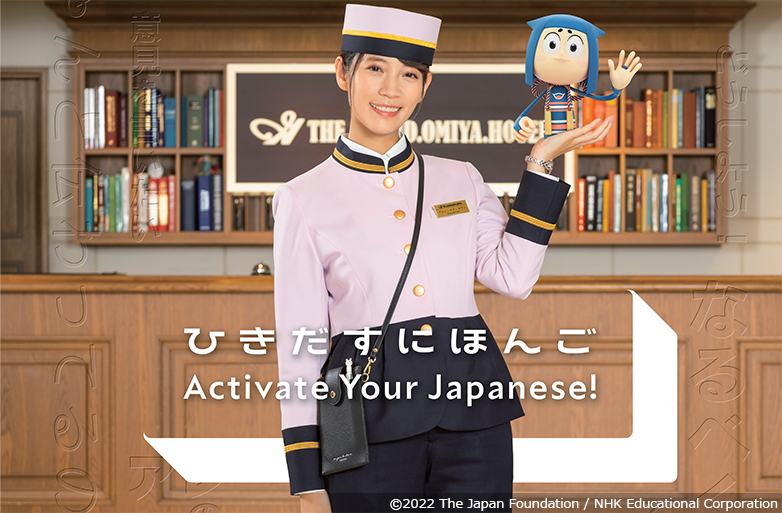
The story begins with Xuan’s arrival in Japan to work in a Japanese hotel. By using strategies that she comes up with through conversations with the somewhat meddlesome key ring, “Yansu,” Xuan overcomes the various communication problems that she encounters in work and life.

The first episode features an exchange that takes place in the car that Xuan is travelling in from the airport. In conversing with colleagues whom she is meeting for the first time, Xuan, who lacks confidence in her Japanese language proficiency, is unable to keep the conversation going fluently although her colleagues initiate various topics of conversation. The conversation breaks down intermittently, and the car is filled with an awkward atmosphere. In this situation, Xuan uses the strategy of asking questions to encourage the other person to talk. Even if she is unable to speak much herself, she is able to keep the conversation going by asking a question on a topic that the other person is familiar with and getting them to talk about it.
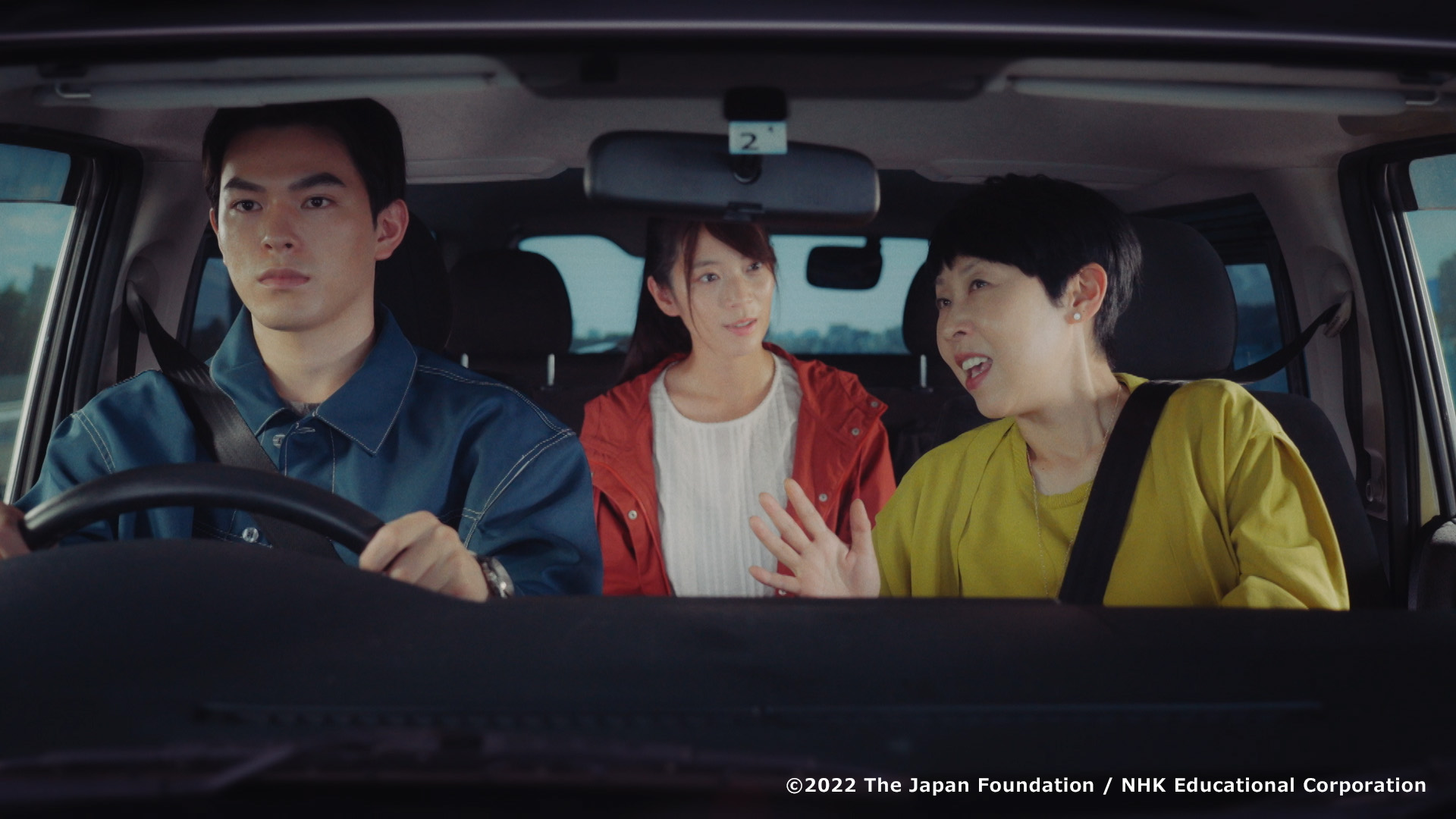
Xuan also uses a wide range of other strategies in somewhat challenging situations that she encounters when using a foreign language, such as being unable to catch instructions, unable to end a conversation smoothly, and wanting to make a comment during a discussion.
The attractive characters surrounding Xuan should also not be missed. In addition to her exchanges with Ms. Ota, the hotel manager who is very understanding of Xuan, and with her instructor Sumire who speaks the Kansai dialect, Xuan also goes through somewhat nerve-racking exchanges with members of the local community. Through the drama, viewers can see the wonderful communication that enrich life in Japan.
At the end of each episodes, the mysterious character “Yansu” explains and reflects on the strategies used by Xuan.
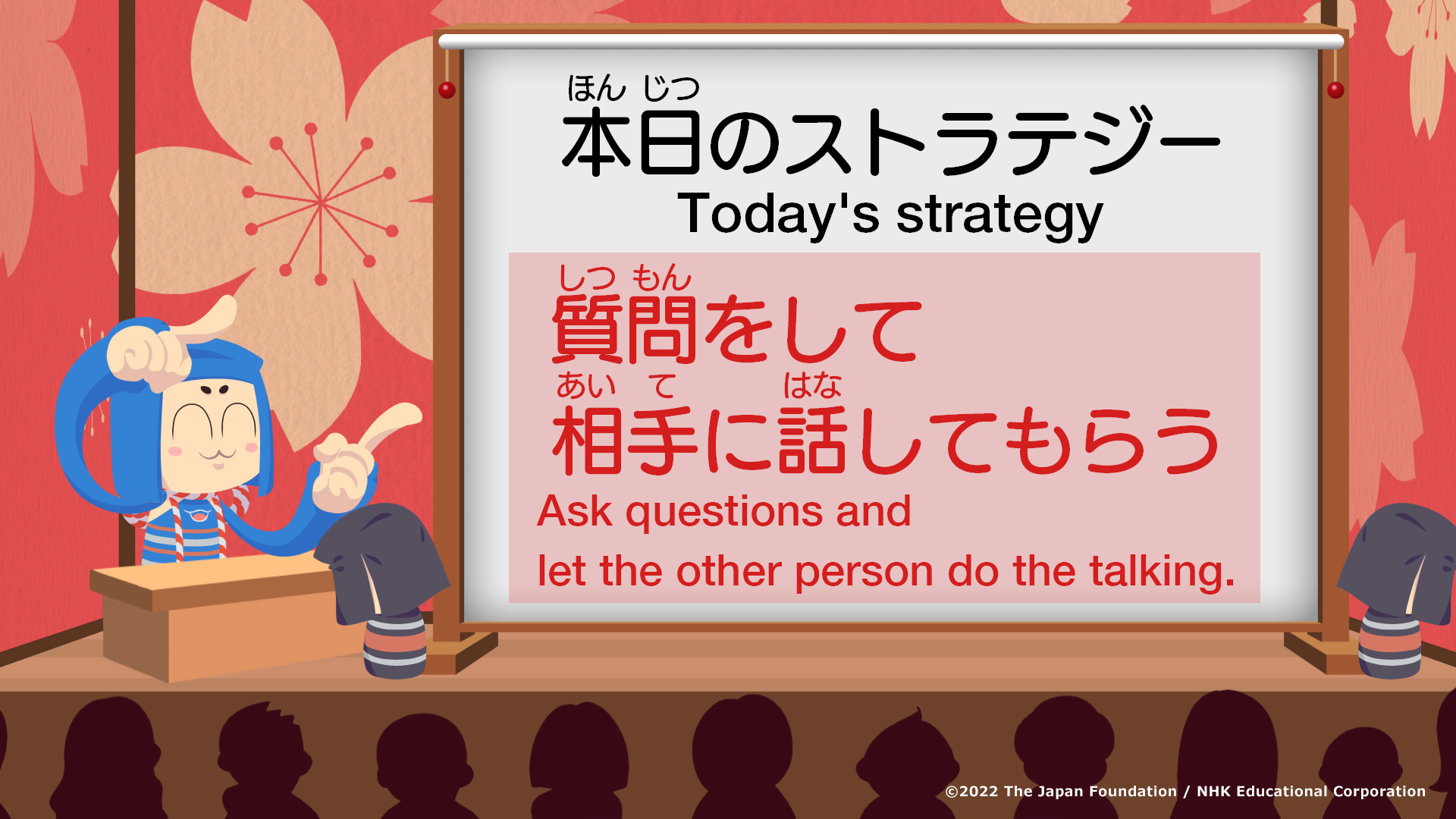
In the broadcasts of the program on NHK WORLD-JAPAN, all the spoken lines are subtitled in English so that even those who are not learning the Japanese language can enjoy the program. Moreover, Xuan’s lines are subtitled in both English and Japanese, to make it easier for viewers to use the program for their Japanese language studies.
気持ちが伝わるオノマトペ/ONOMATOPOEIA -Share Feelings-
This is a mini section that introduces the onomatopoeia used frequently in daily communication, such as wakuwaku and pittari. The Japanese language is said to have many onomatopoeias when compared to other languages around the world; from these onomatopoeia expressions, we have chosen and featured those that can be used in casual conversations in everyday life to convey the emotions of the speakers.
The first half of the section uses colorful and adorable animation, as well as music that matches the image of the onomatopoeia, to convey their meaning both visually and sensually.
The second half of this section is a skit that shows how onomatopoeia is used in actual spoken communication.
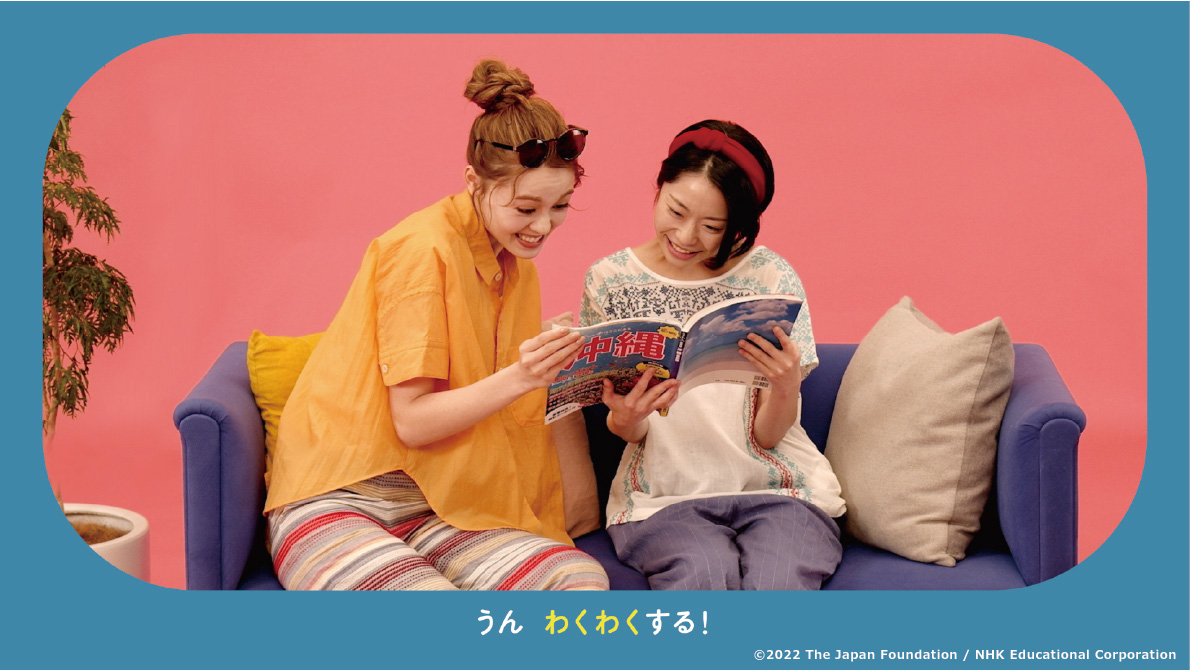
Phrases that use onomatopoeia, such as wakuwakusuru! and pittaridane!, are short and therefore can be remembered and used quickly. Communicating emotions through onomatopoeia makes conversations more enjoyable.
津々浦々 日本のセンパイ/Welcome to My Japan!
This documentary section introduces the senpai (seniors) who are active in various workplaces in Japan, and at the same time, conveys Japan’s charms across all parts of the country.
From Hokkaido in the north to Okinawa in the south, many senpai are active across Japan. The senpai who are featured in the program are engaged in a wide variety of jobs! From senpai working in hotels like Xuan, to senpai working in nursing care facilities and senpai involved in town revitalization work at local corporations, all the senpai who are active in Japan offer tips for working and living in Japan.
Language information
NHK WORLD-JAPAN broadcasts the program in the following languages.
| Audio | Subtitles | |
|---|---|---|
| スアン日本へ行く! Xuan Tackles Japan! |
Japanese | English (some parts with Japanese subtitles) |
| 気持ちが伝わるオノマトペ ONOMATOPOEIA -Share Feelings- |
Japanese | Japanese |
| 津々浦々 日本のセンパイ Welcome to My Japan! |
English | Some parts with English and Japanese subtitles shown jointly |
To date, the Japan Foundation has produced many educational videos for Japanese language learning, such as “ヤンさんと日本の人々 (Yan and the Japanese people),” “続・ヤンさんと日本の人々 (Yan and the Japanese people II),” “Erin’s Challenge! I Can Speak Japanese.”, targeted at intermediate Japanese language learners, and “にほんごにゅうもん (Nihongo Starter)” targeted at undergraduate and graduate students in the sciences.
With this new series targeted mainly at learners wishing to work and live in Japan, lineup of our educational videos has expanded further. We hope you will enjoy “ひきだすにほんご Activate Your Japanese!” too!
- Note:
-
- 1.The first episode comprises a drama and documentary, while the 24th episode comprises a drama and mini section. All other episodes comprise the three sections.
- 2.The JF Standard for Japanese-Language Education presents the levels of Japanese language proficiency in six stages, A1 to C2. This is the same as the levels established in the Common European Framework of Reference for Languages (CEFR).
- 3.The development of “Irodori: Japanese for Life in Japan” and the development of the “IRODORI Japanese Online Course” are covered in detail in “Nihongo Kyoiku Tsushin” articles published in April 2021 and June 2021 respectively.
(KIKUOKA Yuka, HONDA Masami, and ISHIYAMA Tomoyuki / Lecturer, Japanese-Language Institute, Urawa)
- What We Do Top
- Arts and Cultural Exchange [Culture]
- Japanese-Language Education Overseas [Language]
- Japanese-Language Education Overseas [Language] Top
- Learn Japanese-language
- Teach Japanese-language
- Take Japanese-Language Test
- Know about Japanese-language education abroad
- The Japanese-Language Institute, Urawa
- The Japanese-Language Institute, Kansai
- Japanese-Language Programs for Foreign Specified Skilled Worker Candidates
- Japanese Language Education for Japanese Children Resident Overseas and for the Descendants of Migrants
- Archives
- Japanese Studies and Global Partnerships [Dialogue]
- JF digital collection
- Other Programs / Programs to Commemorate Exchange Year
- Awards and Prizes
- Publications

